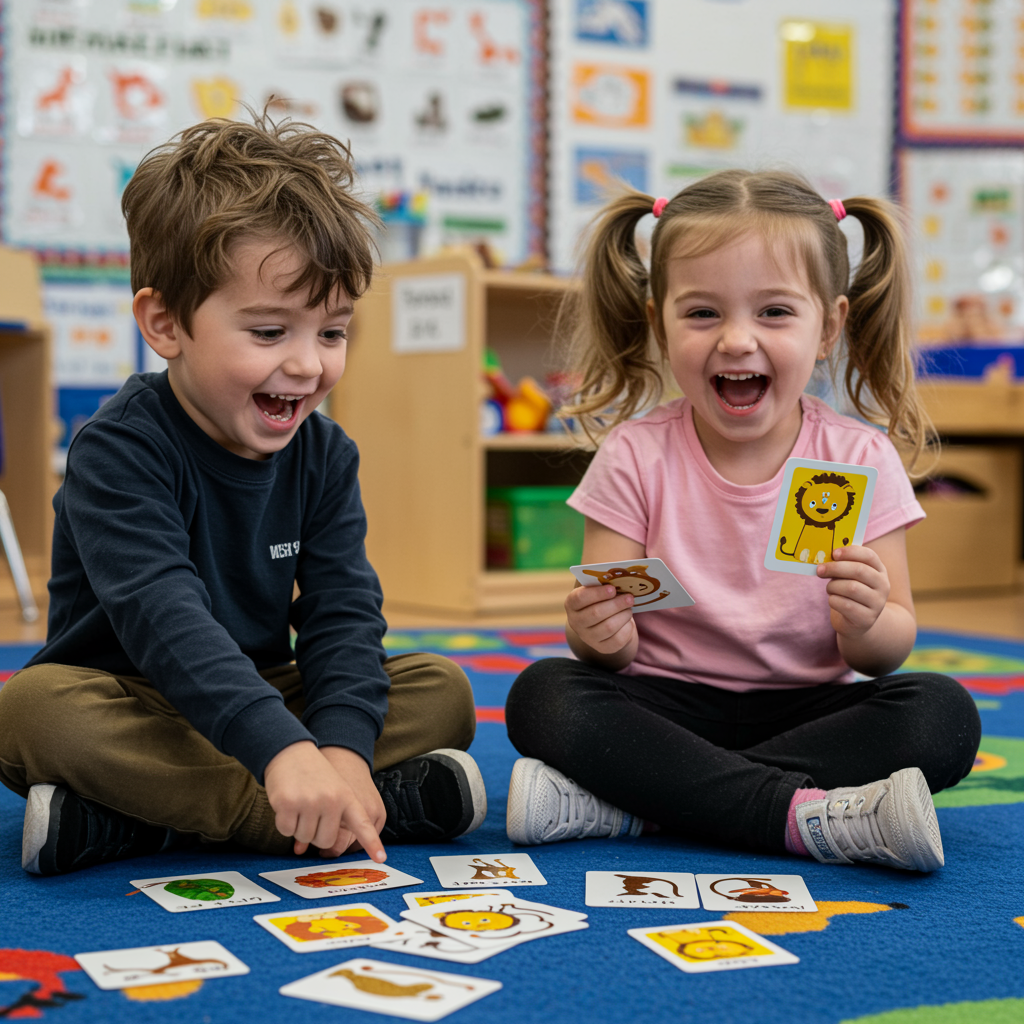How to Use Flashcards Creatively in the Classroom or at Home

Simple Cards, Endless Possibilities!
Flashcards are more than just flip-and-drill tools—they can be powerful learning aids when used with a bit of imagination. Whether you’re a parent at home or a teacher in the classroom, there are countless ways to turn ordinary flashcards into extraordinary learning experiences.
Let’s explore fun, engaging, and creative ways to use flashcards that go beyond the usual!
1. Flashcard Scavenger Hunt
How to do it:
Hide flashcards around the room and give clues or ask children to find the card that matches a sound, word, shape, or number.
Why it works:
It turns learning into a movement-rich, exciting game—great for kinesthetic learners and burning off energy!
2. Flashcard Dice Game
How to do it:
Assign each flashcard a number. Roll a die and find the matching card. The child reads the word, says the sound, or solves the math fact.
Why it works:
It adds randomness and anticipation to learning. You can easily adjust the difficulty level by changing the task.
3. Animal Walk Match-Up
How to do it:
Lay flashcards across the floor. Ask kids to walk like animals (crab walk, bear crawl, frog hop) to a card that fits your clue (e.g., “Find a word with the short ‘a’ sound”).
Why it works:
It mixes phonics with physical activity—perfect for boosting memory and focus.
4. Memory Match Game
How to do it:
Make pairs of flashcards (pictures and words, uppercase and lowercase letters, etc.) and play memory matching game with them.
Why it works:
Classic games like these help with recognition and recall while keeping things light and fun.
5. Act It Out!
How to do it:
Choose a flashcard and act it out like charades—have others guess the word or sound.
Why it works:
It encourages imagination, reinforces word meaning, and is a great group or family activity!
6. Sorting Games
How to do it:
Sort flashcards by categories—such as beginning sounds, colors, numbers, parts of speech, or shapes.
Why it works:
Sorting helps children develop critical thinking and categorization skills.
7. Story Builder
How to do it:
Pick a few word or picture flashcards and challenge your child to build a short story using them.
Why it works:
This builds creativity, vocabulary, sequencing, and comprehension in a fun, open-ended way.
8. Write the Room
How to do it:
Place flashcards around the room. Give children clipboards and have them find and write each word or solve a math problem.
Why it works:
It mixes literacy or math with movement—perfect for energizing learning time.
9. Sing It or Rap It
How to do it:
Pick a flashcard and sing it to a familiar tune (like “Twinkle Twinkle” or a made-up beat).
Why it works:
Melody and rhythm make words stick, especially for auditory learners.
10. Use with Sensory Materials
How to do it:
Pair flashcards with sensory bins, sand writing, playdough mats, or tactile trays for tracing.
Why it works:
Hands-on exploration enhances fine motor skills and deepens learning connections.
Final Thoughts
Flashcards are an incredibly flexible learning tool that can be as exciting or creative as you make them. Whether you’re helping your child practice at home or planning a fun group activity in the classroom, these ideas turn flashcard time into quality learning time.
Remember: The key is variety, movement, and FUN!






